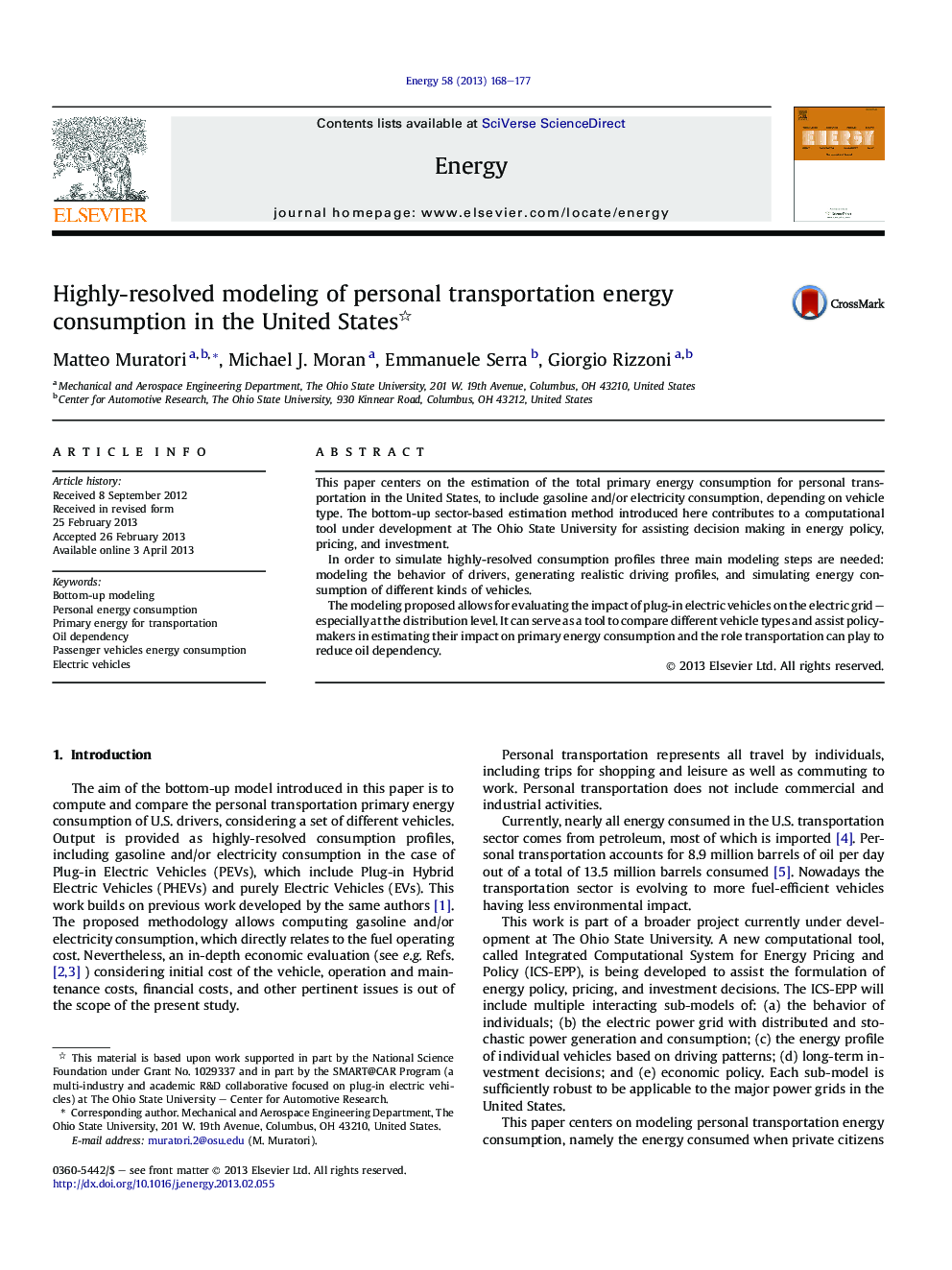| Article ID | Journal | Published Year | Pages | File Type |
|---|---|---|---|---|
| 1732879 | Energy | 2013 | 10 Pages |
•Modeling primary energy consumption for personal transportation in the United States.•Behavior of drivers has been simulated in order to establish when driving events occur and the length of each event.•Realistic driving profiles for each driving event are generated using a stochastic model.•The model allows for comparing the initial cost of different vehicles and their expected energy-use operating cost.•Evaluation of the impact of PEVs on the electric grid – especially at the distribution level – can be performed.
This paper centers on the estimation of the total primary energy consumption for personal transportation in the United States, to include gasoline and/or electricity consumption, depending on vehicle type. The bottom-up sector-based estimation method introduced here contributes to a computational tool under development at The Ohio State University for assisting decision making in energy policy, pricing, and investment.In order to simulate highly-resolved consumption profiles three main modeling steps are needed: modeling the behavior of drivers, generating realistic driving profiles, and simulating energy consumption of different kinds of vehicles.The modeling proposed allows for evaluating the impact of plug-in electric vehicles on the electric grid – especially at the distribution level. It can serve as a tool to compare different vehicle types and assist policy-makers in estimating their impact on primary energy consumption and the role transportation can play to reduce oil dependency.
